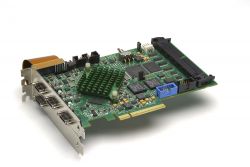Digital Twin for Humanoid Robot DARwIn-OP
The work of David Mansolino, a graduate student in microtechnology, makes it possible for a small Korean robot with big eyes that change color to come to life through a virtual platform.
It walks, falls, and gets up on his own, follows a ball by sight and shoots. It also knows how to do many other things. The small humanoid robot DARwIn-OP was developed by a Korean company and three U.S. universities to serve as a tool for scientific research. Now, David Mansolino has given it a digital twin. This graduate student integrated it into a simulation platform developed by an EPFL spin-off, Cyberbotics. He also accomplished data transfer from a computer to the robot with a single click.
The first step for the master's thesis was to improve the humanoid robot's simulation model, which is still incomplete, through comparison with the actual robot. This digital twin now serves as a basis to facilitate the learning of new tasks for DARwIn-OP. It possesses not only the robot's appearance, but also its physical and electronic characteristics: a camera, an accelerometer, a gyroscope, LEDs and 20 motors whose position is continuously checked and adjusted accordingly.
The user can create his own world and add one or more robots. Environmental parameters are also taken into account. If the small humanoid encounters an obstacle, for example, the robot displayed on the screen will lose its balance, as it would in reality. When it throws a ball, weight and resistance influence the dynamics of the movement. Going through a simulator saves time, since tests can run much faster than in real time. And it also reduces potential damage to the actual robot.
But the work does not stop with simulation. David Mansolino has developed a window that makes it possible - in a single click - to go directly from the simulated task to the robot and to monitor the status of all sensors and actuators in real time. He also developed three examples of new abilities in the little robot. Compatible with Robotis, the program provided by the manufacturer of the robot, the new version of Webots which includes the student's contribution is now on the market. It boasts other new features, such as using the keyboard to interact with the robot and the ability to use text-to-speech.
Source: http://actu.epfl.ch/
Featured Product

